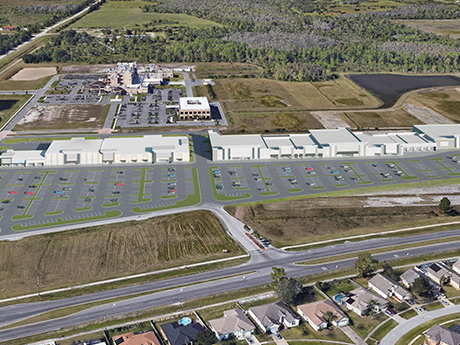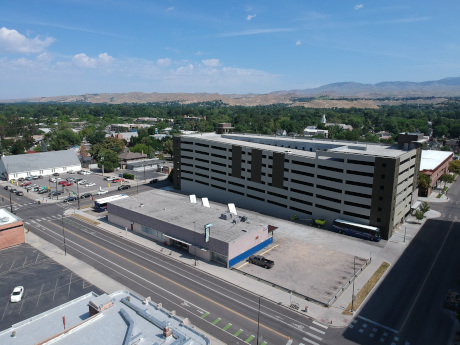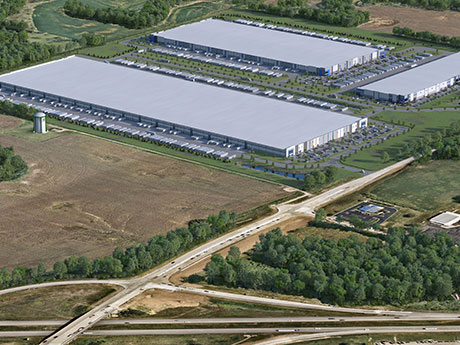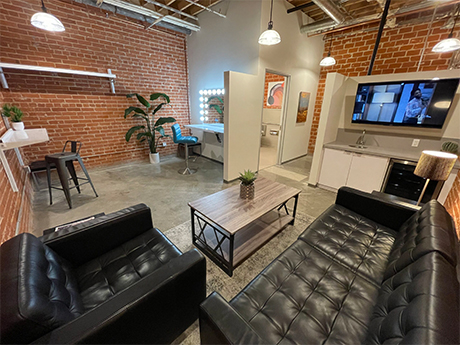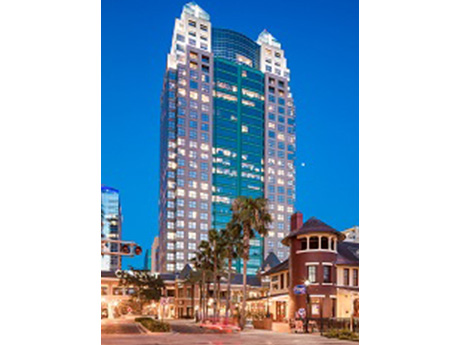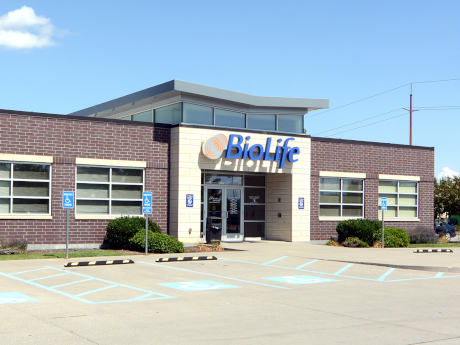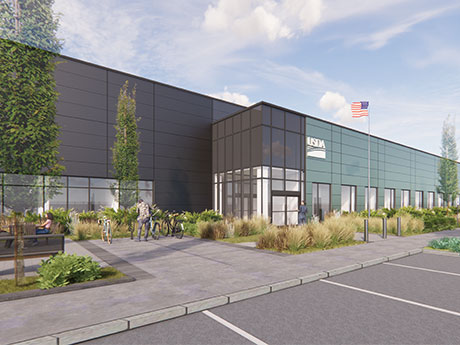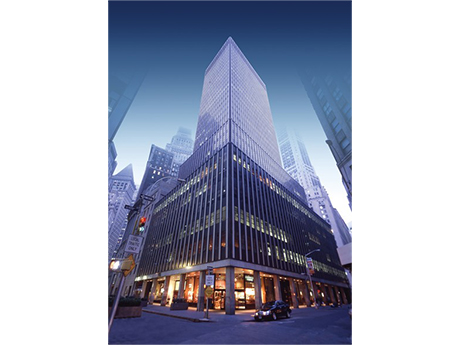The demand for retail space throughout Central Florida has been extremely high as new concepts are moving into the marketplace due to the mass exoduses from New York City and California. With the major population shift, we are running into the issue of limited supply to lease. Vacancy rates are currently projected at 3.8 percent, which is approximately 100 basis points below the 10-year historical average. Vacancy rates are projected to meet the mid-4 percent range by the end of 2023 due to the expected completion of more than 700,000 square feet of retail space during the fourth quarter, according to research from CoStar Group. Some developers are backing out of ground-up development deals due to the heightened labor and construction costs that every firm is experiencing. However, there are still some notable developments occurring in certain trade areas such as Minneola, Lake Nona, Apopka (Kelly Park) and Davenport, which are just some of the areas with projects expected to deliver in the fourth quarter of this year. These new ground-up projects require lessees to pay a higher rent to make these deals pencil out. The current average asking rate in Orlando is $27.77 per square foot, well ahead of …
Market Reports
— By Nellie Day — Boise was a hotspot of activity as the pandemic hit in 2020, with many people desiring more space, more access to the outdoors and, in some cases, a cheaper cost of living. Mike Erkmann, principal at NAI Select, fills WREB in on what the city and its commercial real estate landscape has been like since 2020. What are the notable trends occurring in Boise? The most notable trend occurring in Boise continues to be the expansive population growth. Boise was the fifth fastest-growing city in the U.S. in 2022 and 2023. We are expected to see 37 percent population growth between 2022 and 2050, with a predicted total MSA population of 1.1 million people. On average, we are adding about 15,000 people annually, which will continue to rank Boise at the top for fastest-growing cities in the U.S. What challenges is this market facing? Aside from the obvious challenges we are facing in the market, including higher interest rates and tougher lending requirements, we here in Idaho are facing a shortage of labor with the dramatic increases in the cost of living. Median sales prices in Boise have increased 78 percent over the past five years …
By Scott Bluhm, Newmark Zimmer Since 2016, the Kansas City industrial market has been on a hot streak. We observed more opportunities and increased user activity. There have been consistent years of record positive space absorption and the delivery of Class A buildings, whether speculative or build-to-suit. The peak of that hot streak was in 2022. The year concluded with records in positive absorption, vacancy and rental growth. By the end of 2022, Kansas City became the 15th-largest industrial market in terms of square footage, surpassing Seattle. Significant statistics for 2022: •Over 16 million square feet of positive absorption •A vacancy low of 3.6 percent •A 10.6 percent increase in rental rates The year 2023 has been unique due to economic conditions and uncertainty. New speculative construction starts are down approximately 70 percent, with around 2.5 million square feet breaking ground in 2023. Most of the speculative buildings delivering in 2023 were projects that began construction in 2022. Annual net absorption has decreased to 2.5 million square feet in the first and second quarters. For reference, the fourth quarter of 2022 saw a record-setting net absorption of approximately 7.3 million square feet, and the third quarter of 2022 had 3.2 …
— By Nellie Day — Santa Monica, Calif.-based BLT Enterprises has been an owner, investor, developer and manager of commercial properties since 1984. The firm has seen a lot of changes over that time, which means adaptability remains key to its strategy — and long-term survival. One of the ways the firm is adapting to current market conditions is through the acquisition and operation of production studios and soundstages. The most recent data on usage and demand for these product types is from the year 2020. At this time, CBRE noted there was 11 million square feet of soundstage space in North America, with half of it being in Los Angeles. Speaking of 2020, the pandemic was also responsible for a 74 percent year-over-year increase in streaming video demand. FilmLA’s 2020 Sound Stage Production Report also noted the industry maintained an average occupancy of 94 percent that year, with the report further showing television production increased 10 percent in 2020. For comparison, studio occupancy averaged 70 percent in 2017. Though the world isn’t locked down the way it was in 2020, digital content demand shows no signs of slowing down. Consumers will spend an estimated $151 billion on technology services, …
The Orlando office market saw improved office activity in the second quarter after a somewhat slow start to the year. Quarter-over-quarter, the average deal size rose by 11.2 percent with Downtown, South Orlando and East Orlando as the three submarkets benefitting from an increase in office leasing activity. The majority of institutional landlords in downtown Orlando are some of the early adopters of flight-to-quality phenomenon, and as a result, tenants from other submarkets have shifted their focus to the city’s Central Business District (CBD). On the other hand, South Orlando enjoys a built-in advantage of having perhaps the greatest number of restaurant options in the greater Orlando area, with easy access to both Sand Lake Road and Millenia Mall areas offering various food options. The need to be co-located with some of the military branches located in Central Florida Research Park drives many simulation and military/defense sector tenants to seek office space in East Orlando, also providing nearby access to the University of Central Florida. Aside from geographical location, more and more tenants are seeking out higher-quality office space while rightsizing their footprint. This is predominantly fueled by flex/remote office schedules combined with the need for employers to provide an …
— By Karena Gilbert, Office and Investment Associate, Colliers — Idaho experienced significant population growth in recent years, and the commercial real estate market reflected that trend. The pace of growth has begun to slow, although overall growth is expected to increase over the next decade. The growth brought both business and talent to the state as the Boise MSA continues to maintain a healthy office market. Second-quarter vacancy sits at 7 percent, up from 6.1 percent in the first quarter and outperforming the national vacancy rate, which stands at 16.4 percent. The Boise MSA has experienced an 18.5 percent job growth over a five-year period compared to the national growth level of 3.4 percent. Despite these promising stats, Idaho is not immune to the economic turbulence being felt on a national level. With interest rates rising and market uncertainty, some buyers have become more cautious while others still actively seek opportunity. Cap rates have increased from 5.1 percent in the second quarter of 2022 to between 5.5 percent and 6.5 percent in the second quarter of 2023. Office lease absorption is down, though we’re still seeing a lot of interest in Boise. Micron, a $66 billion semiconductor company founded …
By Mary Lamie, Bi-State Development The industrial real estate market continues to show its strength in the St. Louis region as new investments by industrial developers hold steady. Coming off a record year in 2022, with more than 7 million square feet of completions entering the market and 6.5 million square feet absorbed, the region’s new construction has leveled off a bit, with 1.1 million square feet of industrial space delivered so far in 2023 and 3.6 million square feet of space still under construction, according to the latest numbers from Colliers. Speculative construction rates remain high, with 65 percent of construction since 2019 being speculative builds. This growth in industrial construction is being fueled by national and regional developers who believe St. Louis has the industrial activity levels needed to drive construction investments. Data included in the “St. Louis Regional Industrial Real Estate Market Indicators & Workforce Report,” released by the St. Louis Regional Freightway in May, shows the St.Louis region now has 182 million square feet of space available. According to the report, the region offers the largest amount of manufacturing space available on the market compared to other Midwestern cities, along with one of the lowest triple …
By Ryan Kimura, senior vice president of strategic partnerships, Premier The changing landscape of work and the future of the office remains in flux, leading to a reduced demand for office space in major metropolitan areas throughout the country. This shift has rendered many office buildings underutilized and obsolete, prompting developers and investors to seek alternative uses for these structures. Simultaneously, urbanization continues to grow, fueling the demand for housing and a need for innovative multifamily solutions. Office-to-multifamily conversions provide an answer to both challenges, repurposing office spaces into much-needed residential units while allowing investors to capitalize on demand. This perfect storm of reduced office demand, increased housing needs and favorable regulatory conditions has driven the popularity of office-to-multifamily conversions, positioning them as a sustainable strategy for urban development. These conversions began to surge in popular metro areas during the height of the pandemic as uncertainty surrounded the return to the workplace. Fast forward three years later and office conversions are still booming — especially in the Dallas market. The region, which has witnessed some of the largest population increase in the country over the past five years, has also had a double-digit office vacancy rate in its downtown area …
— By John Wadsworth and Aaron Phillip, Colliers — The Orange County medical office building (MOB) market continues to show resilience post-pandemic despite headwinds of the new interest rate environment. The overall Orange County MOB market consists of 10 million square feet with a current vacancy of 8.5 percent, down 100 basis points from the end of 2022. The average rental rate is $3.48 per square foot, per month, full-service growth, with an increase of 9.3 percent from mid-year 2022. The lack of significant MOB construction completions, coupled with much of the existing vacancy found in older, functionally obsolete buildings, has kept supply largely in line with demand. The velocity of MOB leasing activity has softened compared to pre-pandemic transaction volume, with healthcare providers still digging out of the financial “COVID hole.” Among other market pressures, labor costs and retention across healthcare employment significantly contribute to continued narrow margins on provider balance sheets. From larger health systems to smaller independent practices, all have been impacted, slowing the pace of expansion projects and mandating shorter, more flexible transactions until more permanent real estate solutions can be implemented. Despite the market challenges posed by the pandemic, MOB absorption has remained positive countywide, …
Orlando remains one of the strongest multifamily markets nationally despite the slowdown being experienced in commercial real estate at large. Its strength is largely defined by growth in rent, supply, upcoming development opportunities, employment and the local economy, which have all contributed to healthy fundamentals. Being a top U.S. tourism destination has also helped with more than 74 million visitors coming to Orlando in 2022. Local tourism has created 212,000 jobs as of year-end 2021, and the city is home to nine world-renowned theme parks that are frequented by tourists. Orlando has also proven to be a very attractive and viable place to live long-term. The city is the fourth-largest in Florida, with an estimated population of more than 312,200 in 2023 and over 2 million within the metropolitan statistical area (MSA). The area’s population growth has supported multifamily growth opportunities, ensuring there is a vast renter pool and demand for the inventory that continues to be delivered. That has propelled rent growth up with submarkets like Colonial Town and Florida Center North, which are still posting year-over-year increases between 10 and 16 percent, significantly higher than the national average. Overall supply has also held up well with 6,103 units …


